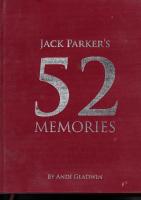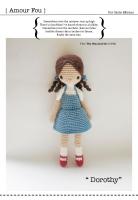"Too Bad" by Dorothy Parker [PDF]
Brega Stanislav “Too Bad” by Dorothy Parker text analysis Dorothy Parker was an American poet, writer, critic, and sati
34 0 29KB
Papiere empfehlen
!["Too Bad" by Dorothy Parker [PDF]](https://vdoc.tips/img/200x200/quottoo-badquot-by-dorothy-parker.jpg)
- Author / Uploaded
- stas brega
Datei wird geladen, bitte warten...
Zitiervorschau
Brega Stanislav
“Too Bad” by Dorothy Parker text analysis Dorothy Parker was an American poet, writer, critic, and satirist based in New York, best known for her wit, wisecracks, eye for 20th-century urban foibles, and also prominent works like “Enough Rope” or “Sunset Gun” which refer to American modernism. She was born on the 22nd of August, 1893, and died on the 7th of June, 1967. Dismissive of her talents, she deplored her reputation as a "wisecracker". Nevertheless, both her literary output and reputation for sharp wit have endured. In her life, she divorced twice, perhaps, that’s why one of her stories is “Too Bad” that was written in a dramatic key. The artistic value of this story is to bring into sharp focus the problem of divorce, possibly from own experience, making the story distinguishable from the other ones of the book. The text places under discussion spouse problems, focusing on divorce at the end, which represents the main theme. Based on the general theme, we can identify secondary themes like a pointless or listless relationship. From my point of view, the author’s primary purpose is to advise young couples. They should spend more time speaking together to know better their partner before marrying them. That is itself the social significance of the extract. The text contains 2 characters Mr. and Mrs. Weldon, who even if married, say almost nothing to each other. Because of this, we can assume that there exists a conflict on an interior level, which means that both characters understand in their minds that there exists a problem, but don’t show this somehow, putting a mask on their faces so their partner wouldn’t observe. To my mind, the description of their house represents a detail of great importance. At the beginning of the text, we find that Mrs. Weldon, before marriage, dreamed of a new dwelling, and at present, she tries to transform it from a simple house into a home. I consider that the house is a metonymy for their relationship, thus we may conclude that even before their marriage, the couple had a pointless relationship, and after moving out, the situation remained as it is described in the text. The title may form the concluding lines of the story, as we can deduce that the plot is centered around a really bad situation. If we consider both parts of the story, then the beginning of it serves as an exposition for past events. Sadly, the ending is totally not unexpected because the beginning specifies exactly how the story will end, so the plot has a closed structure. The text describes one of the couple’s usual evenings, where at the end of it, they both understand that there is no meaning in living together. This represents the climax of the story. In the first part, the plot develops gradually. It presents the main characters, their relationship, after which an evening from their life and their conclusion. Through the plot, we can notice different forms of narration, like dialogue, narration, and description, however, description prevails the most. We can find parts of the description in each paragraph, including the dialogue lines. The description focuses on the relationship
Brega Stanislav
between Mr. and Mrs. Weldon, which lacks communication making it dull, pointless, distant, listless, and even toxic. These adjectives create the mood of the extract. As said earlier, the house may be a metonymy for their relationship, so we conclude that the author manifests the poetic principle of analogy. Both characters have physical and personality descriptions, even if the former is limited to their approximate age (30). They are both very alike, as in public they are both talkative, whereas at home polite and calm. As mentioned before, I consider that the text includes some details from the author’s personal life that give somehow a unique style to the story, which, to my mind, form one of its advantages. The extract attaches much importance to a wrong relationship this is why it reminds me of Leo Tolstoy's novel “Anna Karenina” where the relationship between Mrs. and Mr. Karenin was very complicated. It lacked loved but moreover, Mrs. Karenina had an affair with another man, count Vronsky. It might seem strange, but the main difference between these 2 stories is the century in which they were written. Leo Tolstoy was a 19th-century writer, and in that period, people had a very unique mentality. They thought of divorce as an unacceptable act, especially in a noble family (Mrs. and Mr. Karenin were both nobles), as every people will know about it. That’s why the novel doesn’t end with a divorce, but instead, it goes further. Karenina understands that Vronsky doesn’t love her anymore, and she decides to suicide. Leo Tolstoy doubles the message from Dorothy Parker's story. To sum it up, “Too Bad” contains many pieces of advice from the author’s life to young couples, so each partner should take them into consideration before it would be too late.









